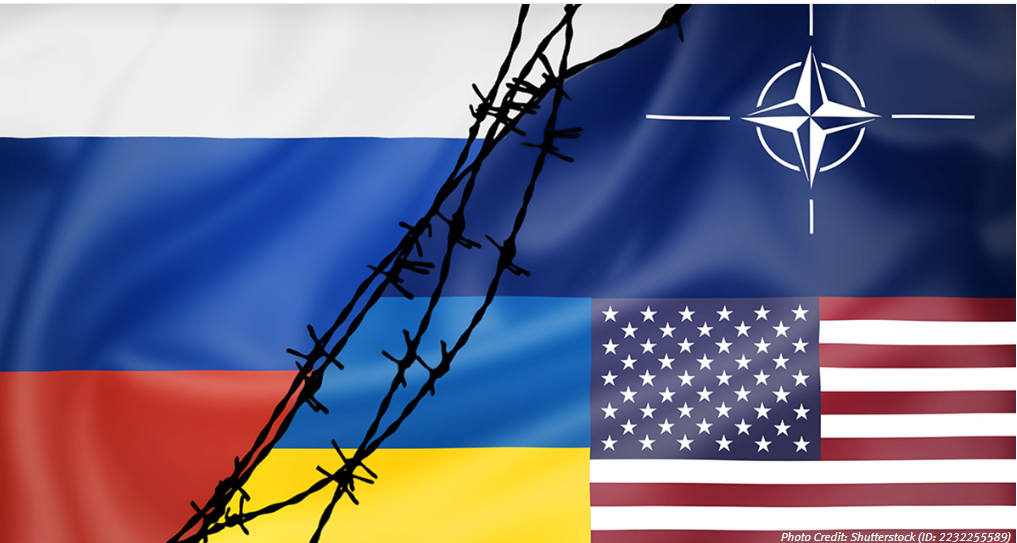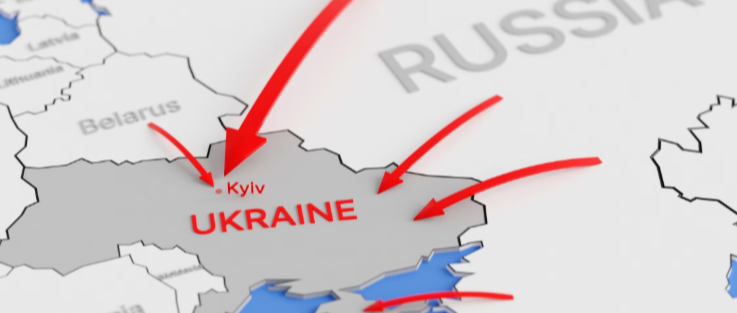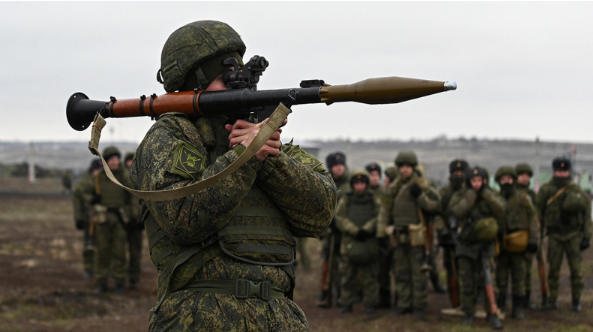On Feb. 24, 2022, Russia invaded Ukraine, marking a major escalation in tensions between the two nations. Below is a timeline of key events leading to the war and major developments since.
Lead-Up to the Invasion
- Dec. 1, 1991: Ukraine votes for independence after the fall of the Soviet Union.
- Dec. 5, 1994: The Budapest Memorandum is signed, with Russia, the U.S., and the U.K. guaranteeing Ukraine’s sovereignty in exchange for nuclear disarmament.
- 2004: Ukraine’s Orange Revolution overturns a fraudulent election, leading to a pro-Western leadership.
- April 3, 2008: Russia opposes Ukraine’s NATO membership bid.
- 2013-2014: Euromaidan protests force pro-Russian President Yanukovych to flee, and Ukraine turns toward the EU.
- Feb.–March 2014: Russia annexes Crimea, drawing international condemnation.
- April 21, 2019: Volodymyr Zelenskyy is elected Ukraine’s president, promising to combat corruption and end the war in the east.
- Dec. 2021: Russia amasses troops on Ukraine’s border and demands NATO deny Ukraine membership.
- Feb. 21, 2022: Russia recognizes Donetsk and Luhansk as independent and sends in troops.
Major Events During the War
- Feb. 24, 2022: Russia launches a full-scale invasion; Ukraine declares martial law.
- Sept. 11, 2022: Ukraine forces Russian retreat from Kharkiv.
- Sept. 21, 2022: Putin mobilizes 300,000 reservists, triggering mass Russian emigration.
- Oct. 5, 2022: Russia annexes four Ukrainian regions after disputed referendums.
- Oct. 8, 2022: A blast damages the Crimean Bridge; Russia retaliates with missile strikes.
- Dec. 21, 2022: Zelenskyy visits Washington; the U.S. pledges $2B in military aid.
- Jan. 25, 2023: The U.S. and Germany agree to send tanks to Ukraine.
- Feb. 2023: Russia launches a new offensive.
- Feb. 20, 2023: Biden visits Kyiv and pledges $500M in aid.
- June 23-24, 2023: Wagner Group mutinies but halts its march on Moscow; leader Yevgeny Prigozhin later dies in a plane crash.
- Feb. 8, 2024: Zelenskyy replaces Ukraine’s top general amid war challenges.
- Feb. 13, 2024: U.S. aid to Ukraine stalls due to Republican opposition.
- April 20, 2024: The U.S. House approves more Ukraine aid.
- Aug. 6, 2024: Ukraine launches a counteroffensive into Russia’s Kursk region.
- Oct.–Nov. 2024: North Korean troops reportedly assist Russia. Trump wins the U.S. election, vowing to end the war quickly.
- Feb.–March 2025: U.S. and Russia hold talks in Saudi Arabia over the war.
Credits: US News

America’s Role in the Russia-Ukraine War
The United States has played a central role in supporting Ukraine since Russia’s invasion on Feb. 24, 2022. Its involvement includes military aid, economic assistance, diplomatic efforts, and sanctions on Russia.
1. Military Support
- Weapons & Equipment: The U.S. has provided billions of dollars in military aid, including artillery, tanks, air defense systems, drones, and ammunition.
- Training & Intelligence: American forces have trained Ukrainian soldiers and provided intelligence to assist battlefield operations.
- Security Commitments: The U.S. has reaffirmed its commitment to Ukraine’s defense but avoided direct military intervention to prevent escalation with Russia.
2. Economic & Humanitarian Aid
- Financial Assistance: The U.S. has sent tens of billions in economic aid to support Ukraine’s government and infrastructure.
- Humanitarian Efforts: Assistance has included food, medical supplies, and refugee support for displaced Ukrainians.
3. Diplomatic Efforts
- Sanctions on Russia: The U.S. has imposed harsh economic sanctions on Russia, targeting its banks, energy sector, and key individuals, including President Vladimir Putin.
- Allied Coordination: The U.S. has worked closely with NATO and European allies to unify support for Ukraine.
- Peace Talks: While supporting Ukraine, the U.S. has engaged in limited diplomatic efforts with Russia through international mediators.
4. Political Challenges & Future Uncertainty
- Divided U.S. Politics: While aid to Ukraine initially had bipartisan support, some Republicans now oppose further funding, arguing it prolongs the war or diverts resources from domestic issues.
- 2024 U.S. Election Impact: Former President Donald Trump’s victory could shift U.S. policy, as he has suggested ending the war through negotiations, possibly reducing support for Ukraine.
Conclusion
The U.S. has been Ukraine’s strongest ally, providing extensive military, financial, and diplomatic backing. However, domestic politics and global negotiations could influence America’s role in the future.






